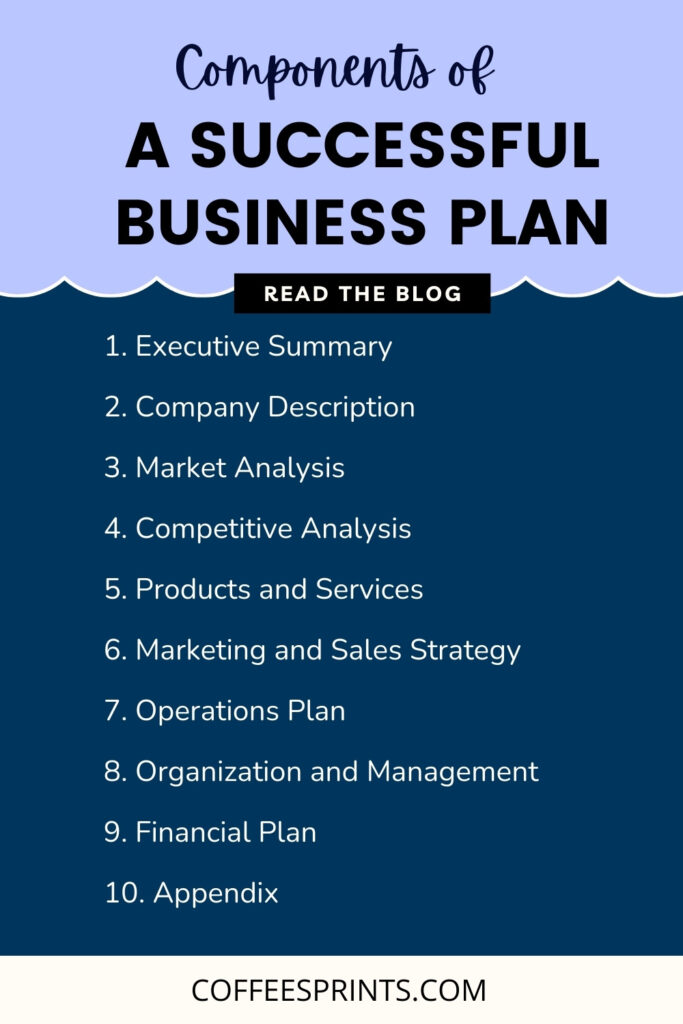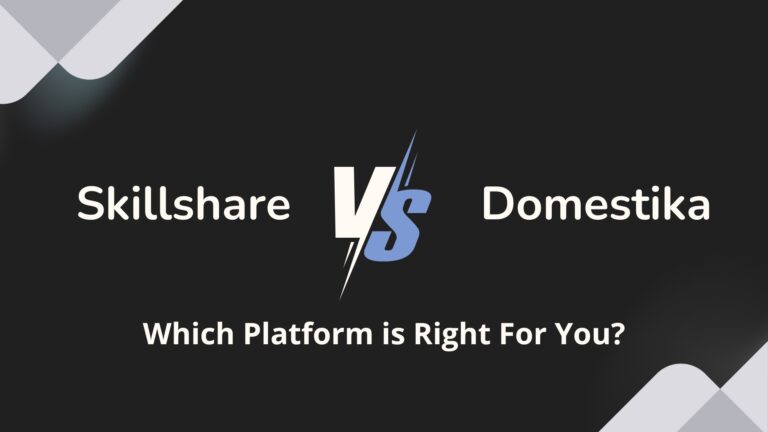How to Write a Business Plan: A Step-by-Step Guide
“A goal without a plan is just a wish.” – Antoine de Saint-Exupéry
Let’s get real—the thought of writing a business plan probably makes you want to run for the hills.
But to increase your chances of success, you just need one thing: a solid fool-proof business plan.
When you’re starting from scratch, all those docs, market analyses, and projections can seem overwhelming.
The good news? It doesn’t have to be!
In this guide, I’ll walk you through how to create a business plan that’s not just a document you file away, but a practical roadmap that will guide your business decisions and could also help you secure funding if needed.
This business plan is for you if you’re launching a new startup, a small business, or expanding an existing business.
We’ll break it down into manageable sections, with some examples to make the process painless.
Note: Not all sections might be relevant based on whether your business is service-based or product-based; feel free to navigate to the part you need.
Why You Need a Business Plan (Even If You Think You Don’t)
It’s always important to understand your “why” before we get into the details.
Here’s the truth: Businesses with written plans grow 30% faster than those without them.
Why? Because a business plan:
Forces you to understand the practicality of your ideas – Writing down your thoughts reveals gaps in your thinking and helps you solve problems before they arise.
Helps you secure funding – Whether you’re approaching a bank, angel investor, or your rich uncle, they’ll want to see that you’ve thought things through.
Creates a roadmap for your team – Your core employees need to understand where the business is headed and how they fit into the bigger picture.
Provides benchmarks for success – A plan gives you targets to aim for and a way to measure your progress.
Reduces stress – When challenges arise (and they will), having a plan helps you stay focused and make decisions confidently.
Now, let’s get started on building your business plan step by step.
How to Approach Your Business Plan
To keep it concise, your business plan should be easily understood by someone who’s genuinely interested in your business but doesn’t know anything about it yet.
Use clear language, avoid jargon, and be honest about both opportunities and challenges.
Your plan should be:
Concise – Aim for quality over quantity. Most plans can be effectively communicated in 15-25 pages.
Specific – Include concrete details, not vague generalizations.
Realistic – Ambitious goals are good, but fantasy projections will harm your credibility.
Adaptable – Your plan should evolve as your business grows and market conditions change.
Now, let’s break down the core sections of your business plan.
The Core Components of a Strategic Business Plan

1. Executive Summary
Despite being the first section, you should write this last because it summarizes your entire plan in 1-2 pages, giving yourself/readers a quick overview of what to expect.
Your executive summary should include:
Your business concept – Describe what your business does in 1-2 sentences
The problem you solve – Explain the pain point your business addresses
Your solution – How your product or service solves that problem
Target market – Who your customers are
Competitive advantage – What makes you different from competitors
Financial highlights – Key projections like annual revenue and profitability timeline
(Optional) Funding needs – If applicable, how much money you’re seeking and how you’ll use it
For example, if you just launched your Meal prep business, here’s how your executive summary could look:
ABC Meal Prep delivers chef-prepared, nutritionally balanced meals to busy professionals who want to eat well but lack time to cook. Unlike meal kit services that require preparation, our ready-to-eat meals eliminate kitchen time entirely. Our proprietary packaging technology keeps meals fresh for 7 days without preservatives, addressing the main complaint about competitors’ products—spoilage and waste. With 200 customers in our pilot program generating $35,000 monthly revenue, we project reaching $1.2M in sales by year two.
Keep your executive summary crisp and compelling—it’s often the only section investors read before deciding whether to continue.
2. Company Description
This section provides a high-level overview of your business, helping readers understand what you do, who you serve, and why you exist.
Include:
Mission statement – Your company’s purpose and core values
Business structure – LLC, corporation, partnership, etc.
Industry – Your business category and relevant trends
Company history – When you started or plan to launch
Business model – How you make money
Short and long-term goals – What you aim to achieve
Example:
Pawsome Pet Care provides in-home pet sitting services to pet owners in the Greater Portland area. Founded in 2023 by veterinary technician Jamie Chen, our mission is to ensure pets receive loving care in their own environment when owners are away, reducing stress for both animals and their humans.
Operating as an LLC, Pawsome employs five certified pet care specialists who complete a rigorous training program focused on animal behavior, first aid, and customer service excellence. Our business model combines subscription-based regular services (dog walking, daily visits) with premium vacation care packages.
Our short-term goal is to establish a client base of 100 regular customers within the first year. Long-term, we aim to expand to neighboring counties and develop a proprietary app that allows owners to receive real-time updates and video check-ins with their pets.
3. Market Analysis
This section demonstrates your understanding of the industry and target market. Solid research here builds credibility and helps you develop effective strategies. Ideally, your industry should have a good growth rate and a decent, solid market.
Include:
Industry analysis – Size, growth trends, and key developments
Target market – Detailed demographics and psychographics of your ideal customers
Market size – The potential customer base in your geographic area
Market needs – The specific problems your customers face
Market trends – How consumer behavior is changing in your space
Market growth potential – Opportunities for expansion

Example:
The pet services industry is experiencing rapid growth, with the American Pet Products Association reporting that Americans spent $123.6 billion on their pets in 2021, up 19% from 2019. The pet sitting and walking segment alone is worth $2.6 billion annually and is projected to grow at 7% yearly through 2026.
Our target market consists of middle to upper-income pet owners aged 25-55 who work full-time outside the home. In the Greater Portland area, this represents approximately 68,000 households with pets. Based on our market research, 42% of these pet owners travel at least twice yearly and require pet care services.
Key market trends include increased humanization of pets, growing concerns about pet anxiety in kennel environments, and willingness to spend premium prices for personalized care. Survey data shows that 78% of pet owners in our target demographic prefer in-home care to boarding facilities, yet only 30% currently use professional in-home services, indicating significant growth potential.
4. Competitive Analysis
Every business has competition, either direct (similar offerings) or indirect (different solutions to the same problem). This section shows you understand the competitive landscape and how you’ll carve out your place in it.
Include:
Direct competitors – Businesses offering similar products/services
Indirect competitors – Alternative solutions to the problem you solve
Competitor strengths and weaknesses – Honest assessment of what they do well
Your competitive advantage – What sets you apart
Barriers to entry – What prevents others from copying your model
Example:
Pawsome Pet Care faces three primary competitors in the Portland market:
1. Portland Pet Nannies: Established for 10 years with strong brand recognition and 7 employees. Strengths include a loyal customer base and comprehensive insurance coverage. Weaknesses include higher prices ($35/visit vs. our $28) and limited availability for last-minute bookings.
2. College Pet Sitters: Informal network of college students offering budget-friendly pet sitting. Strengths include low prices ($15/visit) and flexibility. Weaknesses include inconsistent service quality, limited availability during school breaks, and lack of insurance or formal training.
3. VIP Boarding: High-end pet resort with overnight facilities. Strengths include 24/7 supervision and luxury amenities. Weaknesses include high cost ($65/night), location-based service requiring pet transportation, and reported cases of anxiety in some animals.
Our competitive advantage lies in our specialized training in pet anxiety management, proprietary scheduling system allowing for last-minute bookings, and the development of detailed care plans customized for each pet’s needs. The primary barrier to entry for new competitors is building trust and reputation in a service where customers are particularly concerned about who has access to their homes and beloved pets.
5. Products and Services
This section details exactly what you’re selling and why customers should care.
Include:
- Product/service descriptions – Clear explanations of your offerings
- Features and benefits – What makes your offerings valuable
- Pricing strategy – How you’ve determined your price points
- Product lifecycle – Where products are in their development
- Intellectual property – Patents, trademarks, or copyrights
- Future products/services – What’s in your development pipeline
Example
Pawsome Pet Care offers three core service packages:
1. Daily Dog Walking ($28 per 30-minute session) Our professional pet care specialists provide leashed neighborhood walks for dogs, including fresh water refills, basic training reinforcement, and a detailed visit report. Benefits include exercise, socialization, and reduced destructive behavior from boredom.
2. Basic Pet Check-In ($22 per 20-minute visit) For pets needing minimal care, we provide feeding, water refreshment, litter box cleaning for cats, and brief playtime. This service is ideal for workday check-ins or independent pets during short trips.
Add-on services include: – Medication administration ($5 per visit) – Pet transportation to vet appointments ($25 plus standard visit fee) – Holiday surcharge ($10 per visit)
Our pricing strategy positions us in the mid-range of professional pet care services, offering better value than premium competitors while providing higher quality than budget options.
6. Marketing and Sales Strategy
This section outlines how you’ll attract and convert customers.
Include:
Brand positioning – How you want customers to perceive your business
Marketing channels – Where and how you’ll promote your business
Customer acquisition strategy – How you’ll find and attract new customers
Sales process – How you’ll convert prospects to customers
Customer retention – How you’ll keep customers coming back
Marketing budget – What you’ll spend on these activities

Recommended Read: Marketing Tools for Small Business Owners
Example:
Pawsome Pet Care positions itself as the reliable, professional alternative to asking friends or neighbors for pet care. Our brand emphasizes peace of mind, transparency, and personalized care.
Our customer acquisition strategy includes:
1. Digital marketing: – SEO-optimized website highlighting our service areas and specialties – Google Business Profile targeting local “pet sitter near me” searches – Targeted Facebook and Instagram ads reaching pet owners within our service area – Monthly blog content addressing pet care concerns and travel tips
2. Partnership marketing: – Cross-promotion with three local veterinary practices – Referral program with local dog trainers and groomers – Presence at community pet events and adoption days
3. Referral program: – $25 credit for existing customers who refer new clients – 10% discount for new clients’ first service when referred
Our sales process begins with an initial consultation (free) where we meet the pet and owner, discuss needs, and create a customized care plan. Conversion rates from consultation to booking are currently 80%.
For customer retention, we implement: – Follow-up communication after each service period – Quarterly check-ins with occasional clients – Loyalty program offering every 10th service free – Holiday and birthday cards for pets
(If applicable,) Our marketing budget is $1,500 monthly, allocated as follows: digital advertising (40%), partnership development (25%), referral incentives (25%), and community events (10%).
7. Operations Plan
This section describes how your business functions on a day-to-day basis.
Include:
Physical location – Where you operate from (if applicable)
Equipment and facilities – What you need to run your business
Production process – How you create your product or deliver your service
Supply chain – Your suppliers and their reliability
Quality control – How you ensure consistent quality
Staff requirements – Team structure and hiring plans
Technology – Systems and software you’ll use
Example:
Pawsome Pet Care operates from a small administrative office in East Portland. Our service area covers a 15-mile radius from downtown Portland.
Our operational model follows these steps:
1. Client onboarding: – Initial consultation to meet pet and establish care needs – Collection of detailed pet information (health, behavior, preferences) – Home walkthrough to locate supplies and emergency contacts – Creation of secure key management protocol
2. Service scheduling: – Clients book through our online portal or mobile app – Automated assignment to pet care specialists based on location and availability – 24-hour confirmation system with specialist details sent to clients
3. Service delivery: – GPS check-in system confirms staff arrival and departure – Standardized service protocols for consistency – Photo/video documentation of each visit – Electronic service reports sent to clients
Include the following aspects too.
- Quality control
- Infrastructure
- Staffing plan includes
8. Organization and Management
This section details your business structure and the people who make it run.
Include:
Legal structure – Sole proprietorship, LLC, corporation, etc.
Ownership – Who owns what percentage of the business
Management team – Key personnel and their backgrounds
Board of directors/advisors – External guidance (if applicable)
Organizational chart – How your team is structured
Compensation structure – How people are paid
9. Financial Plan
This section outlines your current financial situation and future projections.
Include:
- Startup costs – What you need to launch or have already invested
- Income statement – Revenue, expenses, and profit projections
- Cash flow statement – When money comes in and goes out
- Balance sheet – Assets, liabilities, and equity
- Break-even analysis – When you’ll start making money
- Funding requirements – What you need and how you’ll use it
- Exit strategy – How investors will get their money back (if applicable)
Example:
Pawsome Pet Care began operations with $42,000 in startup capital, allocated as follows:
– Technology infrastructure: $12,000 – Marketing and branding: $8,000 – Office setup and supplies: $5,000 – Insurance and licensing: $3,000 – Vehicle costs: $10,000 – Working capital reserve: $4,000
Our first-year projections include:
– Revenue: $175,000 based on 50 regular clients and 75 occasional clients – Expenses: $151,000 including staff compensation, office lease, insurance, marketing, and technology – Net profit: $24,000 (14% margin)
Our cash flow analysis indicates that while summer months (peak travel season) will generate surplus cash, winter months may require careful management of resources. We’ve established a $10,000 line of credit with First Portland Bank to manage seasonal fluctuations.
Break-even analysis shows we need 35 regular clients with an average monthly spend of $250 to cover fixed costs. We reached this threshold in month four of operations.
Three-year projections show: Year 1: $175,000 revenue, $24,000 profit Year 2: $285,000 revenue, $57,000 profit Year 3: $385,000 revenue, $96,000 profit
These projections assume: – 45% year-over-year client growth – 5% annual price increases – Addition of two new service territories in year 3 – Stable market conditions and competitive environment
10. Appendix
Not all kinds of business plans need this section. This section includes supporting materials that are too detailed for the main plan.
Consider including:
- Detailed financial projections
- Market research data
- Product images or technical specifications
- Legal documents
- Resumes of key team members
- Permits and licenses
- Facility layouts
- Customer testimonials
Additional Considerations for Service-based Businesses
When you’re running a service-based business, your business plan needs to address unique aspects that product-based businesses don’t face. The quality of your service, client relationships, and how you scale without sacrificing quality are critical factors. Let’s break down the key considerations:
Service Delivery and Customer Experience
For a service-based business, the experience you provide is your product. It’s crucial to outline:
- Service process – Describe the step-by-step process of delivering your service, from initial consultation to completion.
- Quality control measures – How you ensure consistency and high quality in every interaction.
- Client onboarding – How you educate new clients and set expectations.
- Feedback and improvements – Your strategy for collecting client feedback and implementing improvements.
Capacity Planning and Scaling
Unlike products that can be manufactured and stored, services are delivered in real-time. Your business plan should consider:
- Capacity limits – How many clients or projects you can handle at once without compromising quality.
- Scalable processes – How you plan to grow—through hiring, automation, or expanding service hours.
- Contingency planning – How you’ll handle demand surges or staff shortages.
Pricing and Billing Strategies
Services are often priced based on time, expertise, or package deals. Be clear about:
- Pricing models – Whether you charge hourly, per project, or through retainer agreements.
- Billing schedules – When and how clients are billed—upfront, in stages, or upon completion.
- Cancellation and refund policies – How you handle last-minute cancellations or service disputes.
Building Client Relationships
Service businesses thrive on trust and long-term relationships. Your plan should outline:
- Client retention strategies – How you’ll keep clients coming back.
- Referral programs – Incentives for clients to refer your business to others.
- Personalization efforts – How you plan to tailor services to client needs.
Additional Considerations for Product-based Businesses
If your business revolves around creating, manufacturing, or selling physical or digital products, your business plan needs to focus on different areas compared to service-based models. Let’s look at the essentials:
Product Development and Lifecycle
Whether you’re selling handmade crafts, digital downloads, or tech gadgets, you need to consider:
- Product design and development – How your products are designed, prototyped, and tested.
- Production process – Whether you’ll manufacture in-house, outsource, or use a dropshipping model.
- Product lifecycle management – How you plan to update, improve, or phase out products over time.
Inventory Management and Logistics
Managing physical products comes with unique challenges. Address the following:
- Inventory control – How you’ll track stock levels, prevent overstocking, and handle shortages.
- Storage solutions – Whether you’ll store products in-house, use a third-party warehouse, or work with fulfillment centers.
- Shipping and delivery – How you’ll get products to customers quickly and reliably.
- Returns and exchanges – Your process for handling product returns and customer complaints.
Quality Control and Compliance
Maintaining quality and meeting industry standards is crucial. Consider:
- Quality assurance – How you’ll ensure products meet specifications before they reach customers.
- Testing and certification – If applicable, how products are tested for safety or compliance.
- Legal and regulatory compliance – Adhering to safety standards, labeling laws, and import/export regulations.
Sales Channels and Distribution
Outline your strategy for getting products into customers’ hands:
- Direct sales – Selling directly to consumers through your website or physical store.
- Retail partnerships – Working with local or national retailers.
- E-commerce platforms – Utilizing Amazon, Etsy, or other online marketplaces.
- Wholesale opportunities – Selling in bulk to other businesses.
Both service-based and product-based businesses have unique challenges and considerations. By addressing these specifics in your business plan, you’ll not only create a clearer roadmap but also build confidence with investors, partners, and your team.
When You Need Funding: Additional Considerations
If you’re planning to use your business plan to secure external funding, you’ll need to include some additional elements. Whether you’re approaching banks, investors, or even friends and family, these components will help you make a stronger case:
Funding Request
Be specific about:
- How much money you need right now
- How the funds will be used (equipment, inventory, marketing, etc.)
- Future funding requirements you anticipate over the next 3-5 years
- Type of funding you prefer (debt, equity, convertible note, etc.)
Use of Funds
Create a detailed breakdown showing:
- Specific allocations for different areas of your business
- Timeline for deploying the capital
- Expected outcomes from each investment area
- Key milestones that funding will help you achieve
Return on Investment
Demonstrate the potential return by including:
- Projected growth resulting from the investment
- Payback period for loans
- Potential equity value for investors
- Expected dividends or distributions, if applicable
Exit Strategy
For equity investors, outline:
- Potential acquirers in your industry
- Timeline for potential acquisition or IPO
- Comparable exits in your space
- Conditions that would trigger an exit consideration
Remember, funding sources are primarily concerned with two things: getting their money back (plus a return) and limiting their risk. Your additional funding sections should address both aspects clearly and realistically.
Make Your Business Plan Work for You
Remember, a business plan isn’t something you create once and file away. It’s a living document that should evolve with your business. Here are some tips for getting the most value from your plan:
Review quarterly – Schedule regular check-ins to assess your progress against projections.
Update annually – Refresh your plan each year to reflect changing market conditions and business goals.
Share with your team – Make sure everyone understands how their role contributes to the bigger picture.
Use it for decisions – When faced with a choice, refer back to your plan to ensure alignment with your goals.
Celebrate milestones – When you hit targets outlined in your plan, take time to acknowledge the achievement.
Ready to Get Started?
Creating a business plan might seem daunting, but breaking it down into these manageable sections makes the process much more approachable. Remember, the goal isn’t perfection—it’s creating a useful tool that helps you build a successful business.






